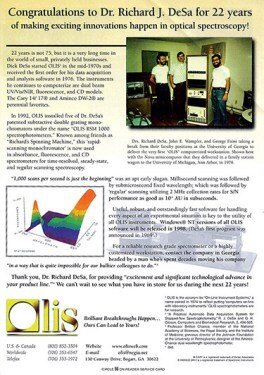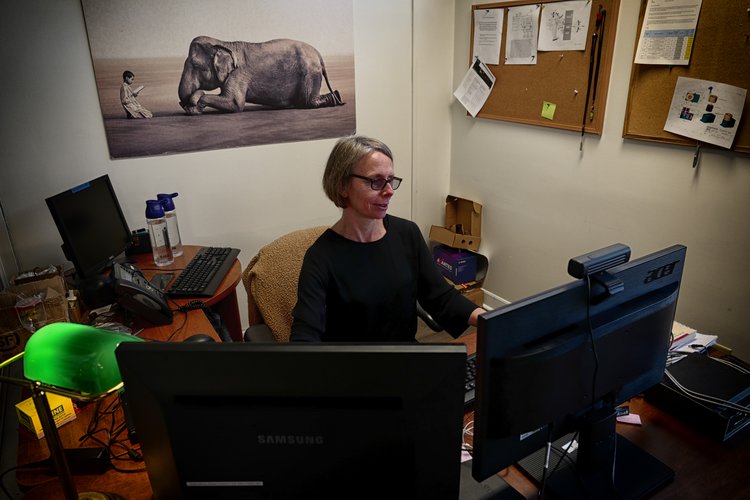Spectrophotometers Can Be Fun For Anyone
Spectrophotometers Can Be Fun For Anyone
Blog Article
Not known Facts About Circularly Polarized Luminescence
Table of ContentsSome Known Details About Spectrophotometers All about Circular DichroismThings about Circularly Polarized LuminescenceSpectrophotometers - QuestionsEverything about Spectrophotometers

Spectrophotometry is a tool that hinges on the quantitative analysis of particles depending on how much light is soaked up by colored substances.
The Basic Principles Of Circular Dichroism
A spectrophotometer is typically used for the measurement of transmittance or reflectance of solutions, transparent or opaque solids, such as refined glass, or gases. Although numerous biochemicals are colored, as in, they soak up noticeable light and for that reason can be determined by colorimetric treatments, even colorless biochemicals can typically be converted to colored substances appropriate for chromogenic color-forming responses to yield compounds suitable for colorimetric analysis.: 65 However, they can also be created to determine the diffusivity on any of the listed light varieties that generally cover around 2002500 nm using various controls and calibrations.
An example of an experiment in which spectrophotometry is utilized is the determination of the balance constant of a solution. A certain chemical reaction within an option might occur in a forward and reverse instructions, where reactants form products and items break down into reactants. At some time, this chain reaction will reach a point of balance called a balance point.
3 Easy Facts About Spectrophotometers Described
The quantity of light that travels through the solution is a sign of the concentration of specific chemicals that do not allow light to go through. The absorption of light is because of the interaction of light with the electronic and vibrational modes of molecules. Each kind of molecule has a private set of energy levels associated with the makeup of its chemical bonds and nuclei and hence will absorb light of particular wavelengths, or energies, resulting in special spectral homes.
The usage of spectrophotometers covers various clinical fields, such as physics, materials science, chemistry, biochemistry. circular dichroism, chemical engineering, and molecular biology. They are extensively utilized in many markets including semiconductors, laser and optical production, printing and forensic evaluation, along with in laboratories for the study of chemical substances. Spectrophotometry is typically used in measurements of enzyme activities, determinations of protein concentrations, decisions of enzymatic kinetic constants, and measurements of ligand binding reactions.: 65 Ultimately, a spectrophotometer is able to identify, depending upon the control or calibration, what substances exist in a target and exactly just how much through estimations of observed wavelengths.
This would come as a solution to the previously produced spectrophotometers which were unable to soak up the ultraviolet correctly.
Not known Facts About Circular Dichroism
It would be discovered that this did not give acceptable outcomes, therefore in Model B, there was a shift from a glass to a quartz prism which enabled much better absorbance outcomes - UV/Vis (https://www.artstation.com/julieanndesalorenz1/profile). From there, Model C was born with an adjustment to the wavelength resolution which ended up having 3 systems of it produced
It was produced from 1941 to 1976 where the rate for it in 1941 was US$723 (far-UV this article devices were a choice at extra cost). In the words of Nobel chemistry laureate Bruce Merrifield, it was "probably the most crucial instrument ever established towards the development of bioscience." Once it became ceased in 1976, Hewlett-Packard created the very first commercially offered diode-array spectrophotometer in 1979 known as the HP 8450A. It irradiates the sample with polychromatic light which the sample soaks up depending on its properties. It is transmitted back by grating the photodiode variety which spots the wavelength region of the spectrum. Ever since, the creation and execution of spectrophotometry gadgets has actually increased profoundly and has turned into one of the most innovative instruments of our time.

Uv/vis Fundamentals Explained
The grating can either be movable or fixed.
In such systems, the grating is fixed and the intensity of each wavelength of light is determined by a various detector in the array. When making transmission measurements, the spectrophotometer quantitatively compares the fraction of light that passes through a reference solution and a test option, then digitally compares the strengths of the two signals and computes the percentage of transmission of the sample compared to the referral requirement.

Report this page